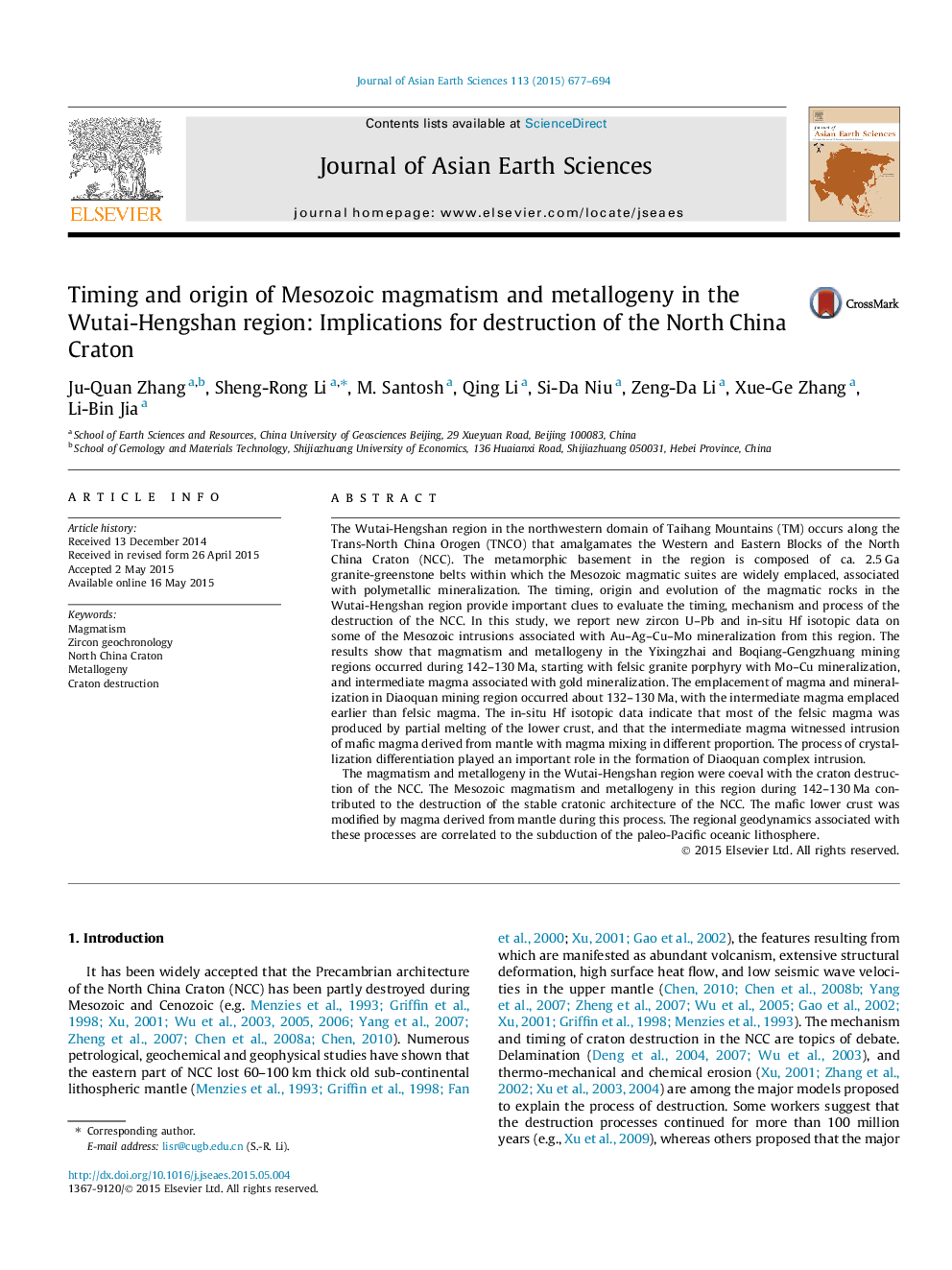| کد مقاله | کد نشریه | سال انتشار | مقاله انگلیسی | نسخه تمام متن |
|---|---|---|---|---|
| 4730325 | 1356749 | 2015 | 18 صفحه PDF | دانلود رایگان |

• Magmatism and metallogeny during 142 Ma and 130 Ma.
• Magmas derived through partial melting of the lower crust and mixing with mantle-derived components.
• Early Cretaceous was the main stage of craton destruction.
The Wutai-Hengshan region in the northwestern domain of Taihang Mountains (TM) occurs along the Trans-North China Orogen (TNCO) that amalgamates the Western and Eastern Blocks of the North China Craton (NCC). The metamorphic basement in the region is composed of ca. 2.5 Ga granite-greenstone belts within which the Mesozoic magmatic suites are widely emplaced, associated with polymetallic mineralization. The timing, origin and evolution of the magmatic rocks in the Wutai-Hengshan region provide important clues to evaluate the timing, mechanism and process of the destruction of the NCC. In this study, we report new zircon U–Pb and in-situ Hf isotopic data on some of the Mesozoic intrusions associated with Au–Ag–Cu–Mo mineralization from this region. The results show that magmatism and metallogeny in the Yixingzhai and Boqiang-Gengzhuang mining regions occurred during 142–130 Ma, starting with felsic granite porphyry with Mo–Cu mineralization, and intermediate magma associated with gold mineralization. The emplacement of magma and mineralization in Diaoquan mining region occurred about 132–130 Ma, with the intermediate magma emplaced earlier than felsic magma. The in-situ Hf isotopic data indicate that most of the felsic magma was produced by partial melting of the lower crust, and that the intermediate magma witnessed intrusion of mafic magma derived from mantle with magma mixing in different proportion. The process of crystallization differentiation played an important role in the formation of Diaoquan complex intrusion.The magmatism and metallogeny in the Wutai-Hengshan region were coeval with the craton destruction of the NCC. The Mesozoic magmatism and metallogeny in this region during 142–130 Ma contributed to the destruction of the stable cratonic architecture of the NCC. The mafic lower crust was modified by magma derived from mantle during this process. The regional geodynamics associated with these processes are correlated to the subduction of the paleo-Pacific oceanic lithosphere.
Figure optionsDownload as PowerPoint slide
Journal: Journal of Asian Earth Sciences - Volume 113, Part 2, 1 December 2015, Pages 677–694